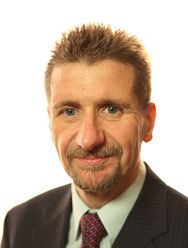 Technology moves in one direction:forward. These days, the advances in treasury technology includeproviding companies with strategic insights, embracing big data andthe cloud, and making it easier for companies to handle everythingfrom payments to bank account management.
Technology moves in one direction:forward. These days, the advances in treasury technology includeproviding companies with strategic insights, embracing big data andthe cloud, and making it easier for companies to handle everythingfrom payments to bank account management.
Joe Siu, director of financial risk management for ChathamFinancial in Kennett Square, Pa., says the goals of treasurytechnology have changed. “The innovations now are more about howfunctionality is delivered instead of what is delivered,” Siusays.
|While the past decade has been dominated by a drive forefficiency and automation, the next decade “will have more to dowith delivering strategic insight and improving competitiveness,”he predicts. A company with sophisticated currency risk management,for example, might be able to win more business by selling in adifferent currency than its competitors.
|While much treasury functionality may be technologically mature,breakthroughs are changing database infrastructure and making datamining and searches faster and more robust, reports CraigHimmelberger, director of ERP financial solutions marketing at SAP.“Technology is moving away from relational databases to in-memorydatabases. It's possible with today's power and economy to build adata array on RAM chips and get near-instant responses.”
| And that empowers mobiletechnology. “A treasurer sitting in an airport can do complex,data-intensive numbers crunching in seconds, much faster than he orshe could at a desktop querying a traditional relational database,”says Himmelberger, pictured at left. “Running what-if scenarios ona mobile that would have been impossible in the past can now bedone relatively easily.”
And that empowers mobiletechnology. “A treasurer sitting in an airport can do complex,data-intensive numbers crunching in seconds, much faster than he orshe could at a desktop querying a traditional relational database,”says Himmelberger, pictured at left. “Running what-if scenarios ona mobile that would have been impossible in the past can now bedone relatively easily.”
Another innovation is sophisticated dashboards, coming nextyear, that can reach into multiple databases to provide customizedsnapshots of just what financial staffs need to see, reports CindyMurray, head of global treasury product infrastructure, platformsand ecommerce at Bank of America Merrill Lynch. One enabler will bethe adoption of the Balance and Transaction Reporting Standard(BTRS), a successor to traditional BAI standards, Murray explains.Banks are positioning their reporting for the 2013 adoption ofBTRS.
|And more aggregation services are coming. “We aggregatedpayments in payment hubs. Now we'll aggregate information anddata-based reporting,” says Tom Durkin, Bank of America's globalhead of integrated channel solutions. “Users won't have to go tothe specific applications to get the data.”
|Another 2013 development should be the linking of FX topayments. “You'll be able to go into a payment application, createa contract for a currency and draw down against that contract asyou make payments in that currency,” Murray explains. “Thetraditional FX app will be more tightly bound to client workflowaround cross-border payments.”
|Paying via Shared ServiceCenters
| One can see the nextgeneration of treasury technology in shared service centers thatpay on behalf of any number of legal entities and soon will bereceiving payments as well, says Arthur Brieske, head of productmanagement for the Americas in global transaction banking atDeutsche Bank.
One can see the nextgeneration of treasury technology in shared service centers thatpay on behalf of any number of legal entities and soon will bereceiving payments as well, says Arthur Brieske, head of productmanagement for the Americas in global transaction banking atDeutsche Bank.
A numbering scheme can be the key to automatic application andreconciliation. “We can assign unique account numbers to ourclients' vendors and customers,” explains Brieske, pictured atright. “They may view it as simply their vendor number, but whenthey populate the reference field to pay or get paid, they areproviding everything their bank needs for auto-reconciliation forACH and wire payments.”
|“That creates a 100% hit rate,” he says. “We know from thenumber structure to which paying or receiving entity itbelongs.”
|Making cross-border ACH payments is also about to get easier,based on the fairly new International ACH Transactions (IAT)standard entry class codes. “If we receive payment files thatconform to IAT, a company can open one account in any country inany currency and make ACH payments anywhere,” Brieske reports.
|Dan Gill, product line director for corporate solutions at OpenSolutions, says the next generation of bank account analysistechnology is ready to take off. “The final release of theISO-certified bank service billing statement will bring a rapiduptake, especially among companies with multiple European banks,”Gill says, noting that 18 banks already are issuing suchstatements.
|He also predicts growing traction for electronic bank accountmanagement (eBAM). “The SWIFT message format is now ISO-certified,”Gill says. “All the pieces are in place.” Watch for a live pilot byUnitedHealth Group, using Open Solutions, J.P. Morgan and Bank ofAmerica Merrill Lynch, he suggests.
|Ed Barrie, head of treasury operations and global foreignexchange at $2.4 billion Itron in Liberty Lake, Wash., says thebiggest technological innovations are eBAM and digital signatures.Adoption has been slowed by the ingrained business and regulatorypractices of banks, despite pressure to move forward from corporatechampions like General Electric and Microsoft, Barrie notes.
|Cloud Migration
| “The days of thick client softwareare fading,” notes Paul Bramwell, senior vice president fortreasury solutions at technology vendor SunGard, pictured at right.“More functionality is migrating to thin-client applications.Treasury staffs like the cloud because it frees them from dependingon IT for help, but data security concerns make them happier with aprivate cloud than the public cloud.”
“The days of thick client softwareare fading,” notes Paul Bramwell, senior vice president fortreasury solutions at technology vendor SunGard, pictured at right.“More functionality is migrating to thin-client applications.Treasury staffs like the cloud because it frees them from dependingon IT for help, but data security concerns make them happier with aprivate cloud than the public cloud.”
The “cloud” is a way of saying that, as long as it's secure, asoftware application's physical location has ceased to matter. Evenin the ERP world, “many companies are moving away from installedon-site software,” SAP's Himmelberger notes. For on-siteinstallations, it's becoming popular in the corporate world toinstall systems in a shared-services center, he adds.
|Another 2013 development should be the linking of FX topayments. “You'll be able to go into a payment application, createa contract for a currency and draw down against that contract asyou make payments in that currency,” explains BofA's Murray.“The traditional FX app will be more tightly bound to clientworkflow around cross-border payments.” BofA Merrill plans tolaunch such a product next year, she says.
|When it comes to treasuries' investments, nirvana—a singlecomprehensive view of all holdings, including those held byinvestment managers and funds, that's available 24/7 with just onelog-in and is reconciled daily—is already available and being usedtoday, reports Scott Erickson, director of product management atClearwater Analytics in Boise, Idaho.
|Such consolidated visibility will become a standard riskmanagement best practice, Erickson predicts. “There are times whena significant event happens and the CFO calls the treasurer to askwhat the company's total exposure is to a particular issuer,industry or market segment. Sometimes the treasurer has to say, 'Idon't know, and it will take time to find out.' That response isbecoming unacceptable.”
|Such visibility is not new for Clearwater clients—some have beenusing it since 2003. What's new is customized reporting. “Everyonewants visibility into their investments, but they view theinvestment world through different lenses,” Ericksonnotes.
|Clearwater bills itself as the ultimate aggregator and reporterof investment data, and doesn't promote its integration with otheraggregators into comprehensive dashboards that go beyond investmentholdings. “We provide the dashboard,” Erickson insists. ButClearwater does integrate with ERP systems to allow “investmentdata to flow seamlessly to create GL entries.”
|Single System versus Best ofBreed
|The debate continues over which is better—a singlecomprehensive, integrated system or a bunch of best-in-class nicheapplications wired together. For workstation provider Kyriba,success comes from adding modules and functionality but also fromthe ability to integrate easily with other financial systems.
|“Treasury can't be an island,” says Robert Stark, vice presidentof marketing at Kyriba. “Integration with things like the GL werealways important, but that has evolved into more interoperabilityas treasury staffs expect to buy best-of-breed solutions and havethem all work together smoothly.
|“There is a thirst for the best technology, and no one vendorcan be the best in every area,” Stark explains. “There are a hostof niche players that excel in their chosen niches. A lot of ourusers want Kyriba to work with 360T or FiREapps, or with SWIFT foreBAM. Some companies will always want to use a single platform, butthe use of specialty applications and the demand for smoothintegration are growing.”
|While Himmelberger thinks SAP users don't need a treasuryworkstation or other back-end reconciliation and reporting systems,he concedes that trading systems may be necessary to supplementSAP.
|“We aren't trading systems experts. That's not our game,” hesays. “We're a system of record and expert at the back-endaccounting, starting with deal capture. We're happy to havepartners do the trading and plug into SAP” for the rest of theaccounting and reporting.
|The old combo of an ERP system linked to a treasury managementsystem still works for many shops. Houston-based BMC Softwarebought an IT2 workstation in 2008 as its first comprehensivetreasury system.
| “We were efficient before, andwe had a variety of solutions, some of them homegrown, that wereworking,” reports BMC Treasurer Corey Walsh. “But IT2 tied allthose activities together with greater automation.” Cash forecasts,for example, are now much quicker and easier to compile, explainsWalsh, pictured at left. The treasury system and BMC's Oracle ERPsystem pass secure files back and forth automatically.
“We were efficient before, andwe had a variety of solutions, some of them homegrown, that wereworking,” reports BMC Treasurer Corey Walsh. “But IT2 tied allthose activities together with greater automation.” Cash forecasts,for example, are now much quicker and easier to compile, explainsWalsh, pictured at left. The treasury system and BMC's Oracle ERPsystem pass secure files back and forth automatically.
BMC, with annual revenue of more than $2 billion, does connectIT2 with niche services to get FX market rates, do FX tradingonline, have FX trades matched and communicate with its custodianabout investment matters, Walsh reports. Instead of usingportal-based bank technology, BMC uses SWIFT for Corporates to sendpayment files and receive bank statements.
|In addition to mobile access, banks are concentrating onintelligent reporting informed by data aggregation. When a bank cancapture all of a company's inbound and outbound payments andcollect all the data on a single platform, the bank is in a goodposition to apply performance metrics and show the company how wellit collects and disburses, notes Jeff Ficke, senior vice presidentand director of treasury management at Fifth Third Bank inCincinnati.
|Bloomberg News
Complete your profile to continue reading and get FREE access to Treasury & Risk, part of your ALM digital membership.
Your access to unlimited Treasury & Risk content isn’t changing.
Once you are an ALM digital member, you’ll receive:
- Critical Treasury & Risk information including in-depth analysis of treasury and finance best practices, case studies with corporate innovators, informative newsletters, educational webcasts and videos, and resources from industry leaders.
- Exclusive discounts on ALM and Treasury & Risk events.
- Access to other award-winning ALM websites including PropertyCasualty360.com and Law.com.
*May exclude premium content
Already have an account? Sign In
© 2024 ALM Global, LLC, All Rights Reserved. Request academic re-use from www.copyright.com. All other uses, submit a request to [email protected]. For more information visit Asset & Logo Licensing.







